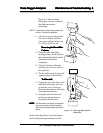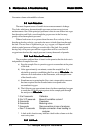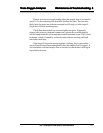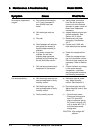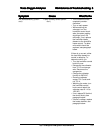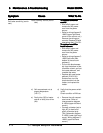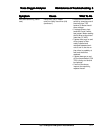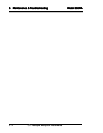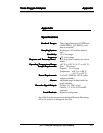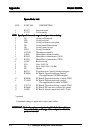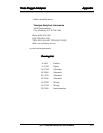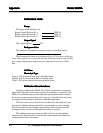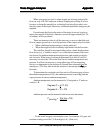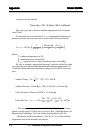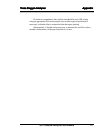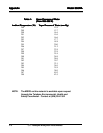
A-5
TT
TT
T
race Oxygrace Oxyg
race Oxygrace Oxyg
race Oxyg
en Analen Anal
en Analen Anal
en Anal
yzyz
yzyz
yz
erer
erer
er
AppendixAppendix
AppendixAppendix
Appendix
Teledyne Analytical Instruments
When span gases are used or when sample gas is being analyzed the
flow can vary ±10–20% and more without changing the reading. It is best,
however, to keep the sample flow so that the float in the flow tube is at or
near the center of the target. Otherwise, a different humidifier setting may be
required.
If positioning the float in the center of the target is in error by plus or
minus one-quarter of the float’s diameter, an error of approximately ±1.5%
of reading
*
will be produced.
There are instances when it will be necessary to reset or check the exit
flow of sample gas and set or reset the position of the target on the flow tube:
• When a different background gas is being analyzed.
• When the target has been accidently repositioned on the flow tube.
The vent flow should be measured either with a volume displacement
flow device (e.g. a “bubble-o-meter”) or a calibrated rotometer with correc-
tion factors for ambient temperature and pressure, and sample gas density
and viscosity. When using a volume displacement flow device it will be
necessary to correct the 150 cc/min flow rate for ambient temperature and
pressure. It will also be necessary, using either type of flow measuring
device, to compensate for the increase in flowrate due to humidifying the
sample gas. (The flow tube inside the analyzer is measuring the
drydry
drydry
dry gas
flowrate.)
To determine the corrected vent flow rate it will be necessary to know
the ambient temperature (in °K), the ambient pressure (in mm Hg) and the
vapor pressure of water at ambient temperature.
Ambient temperature can be measured in °Centigrade or °F and con-
verted to °K.
Degrees C = 5 (°F -32)
9
Degrees K = °C + 273
Ambient pressure can be measured with an accurate barometer.
P
(mm Hg)
= P(in Hg) x 760
30.00
*
If the actual oxygen concentration were, for example, 8.0 ppm, the
resultant reading would be 7.9 (float high) or 8.1 (float low).



